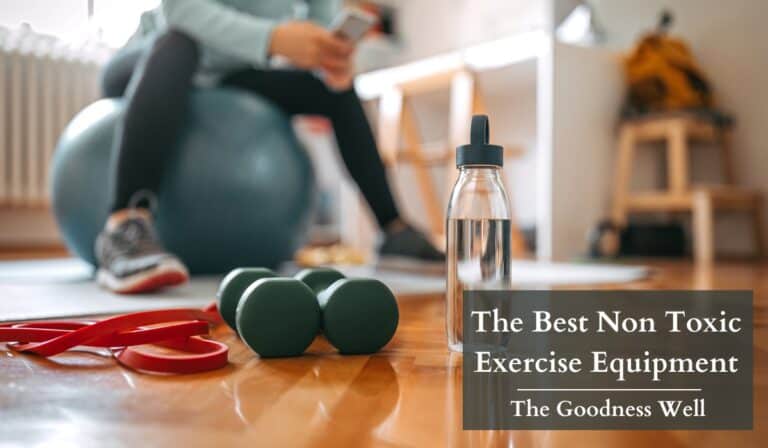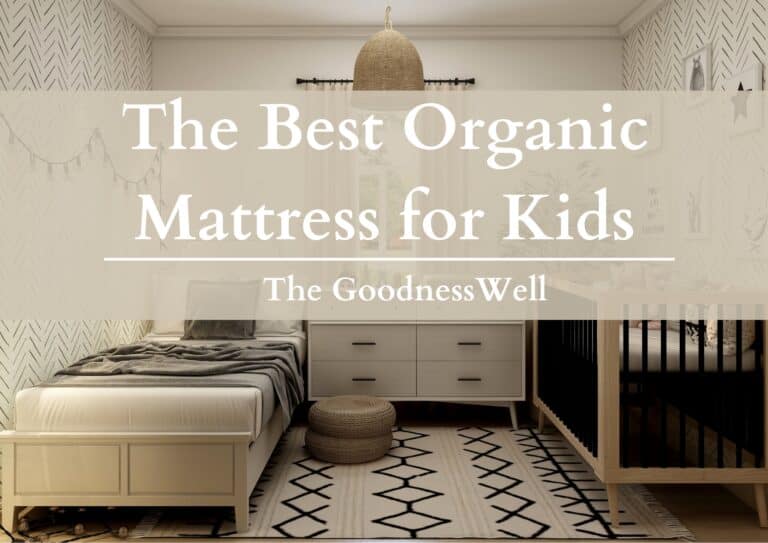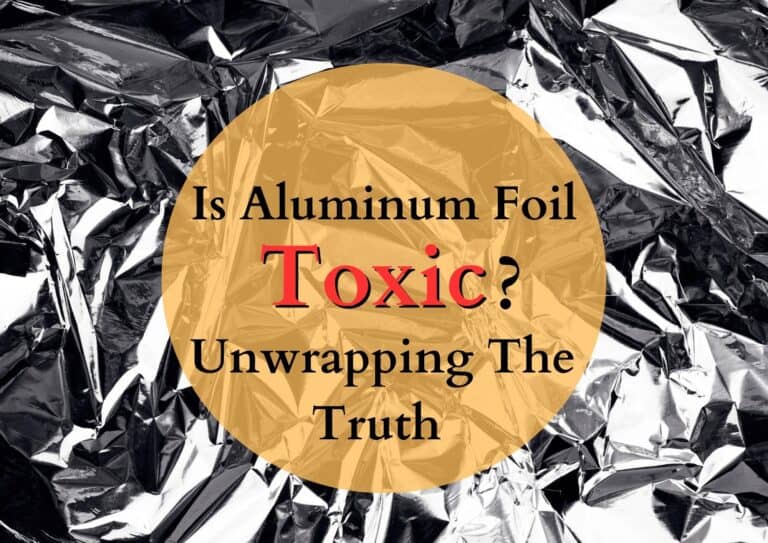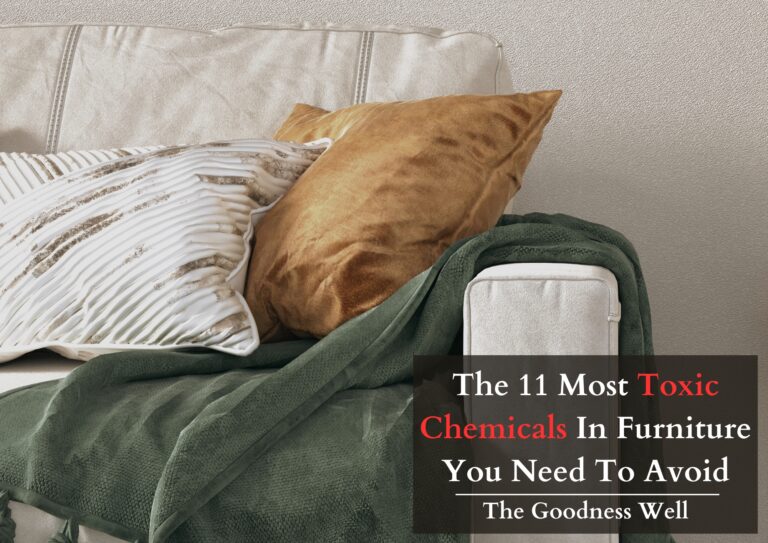9 Eco Friendly Furniture Materials To Look For When Buying Sustainably
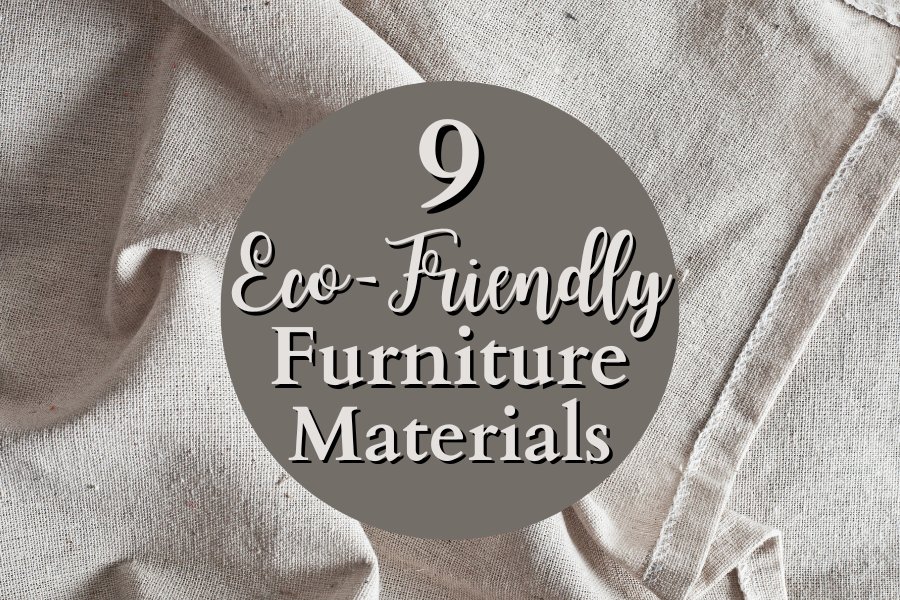
With the off-gassing of toxic chemicals in furniture to cheap furniture that doesn’t last, we’ve made sure to start choosing eco friendly furniture materials for our home.
But what exactly should you look for?
Don’t worry, we’ve got you covered. Here are some furniture materials you should look for to make your home less toxic.
9 Eco Friendly Furniture Materials To Look In Sustainable Furniture
- Bamboo
- Reclaimed Wood
- FSC Certified Wood
- Cork
- Recycled Metal
- Recycled Glass
- Organic Cotton
- Organic Hemp
- Natural Latex
- Natural Linen
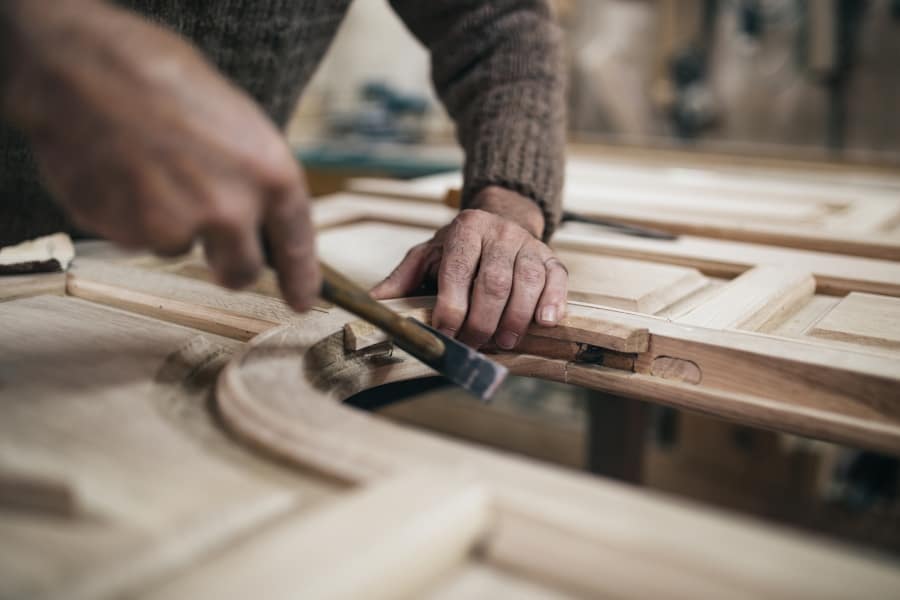
The Difference Eco-Friendly Materials Can Make
Furniture should be made with longevity in mind, not a fast furniture substitute that will break down or be too worn out for use in a year or two.
Many of these cheaper furniture options also use toxic materials that aren’t only bad for the environment but off-gas harmful chemicals in your home.
Choosing non toxic materials not only keeps your living space safer and minimizes landfill waste, but it saves you money in the long run too!
What Are Sustainable Materials?
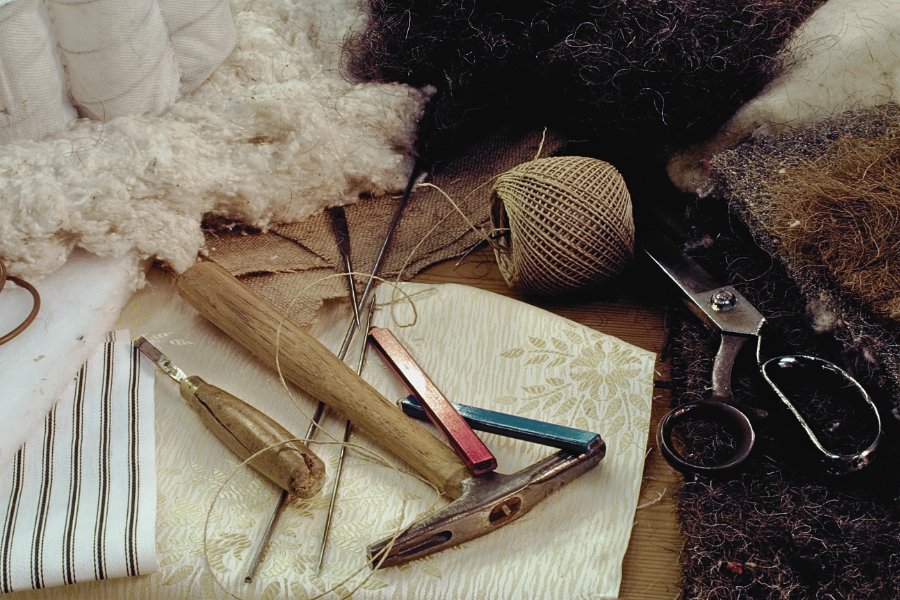
Sustainable materials are materials that are harvested or produced in ways that ensure they won’t run out quickly or harm the environment (or if they do, the impact is small).
Some characteristics of eco-friendly furniture materials are:
- Renewable resource
- Low Impact Harvesting
- Recycled or Upcycled (is sourced from recycled materials or can be recycled)
- Doesn’t contain harmful chemicals
- Long-Lasting
- Easily-Broken Down (Biodegradability)
- Produced with Low Energy
- Minimal or No Carbon Footprint
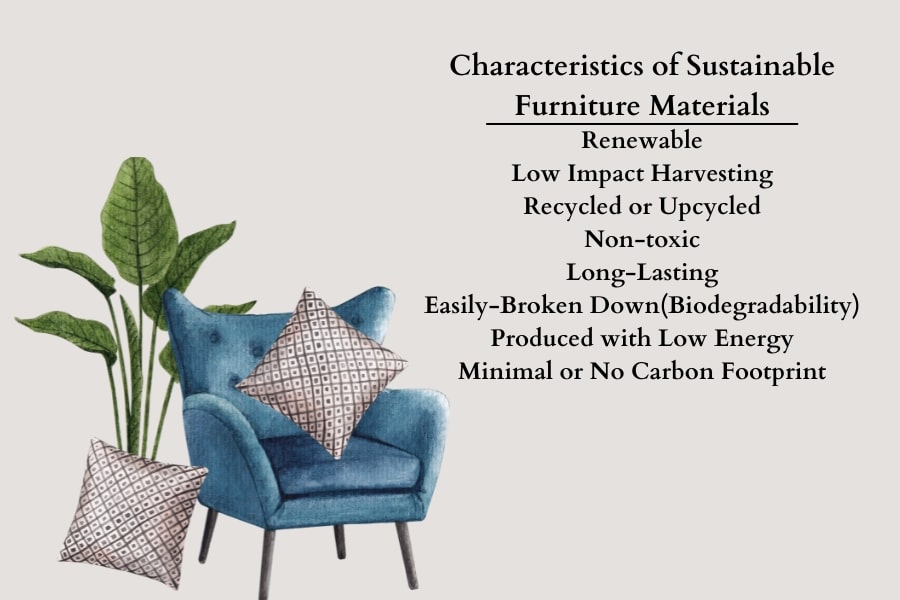
9 Eco Friendly Furniture Materials
1. Bamboo
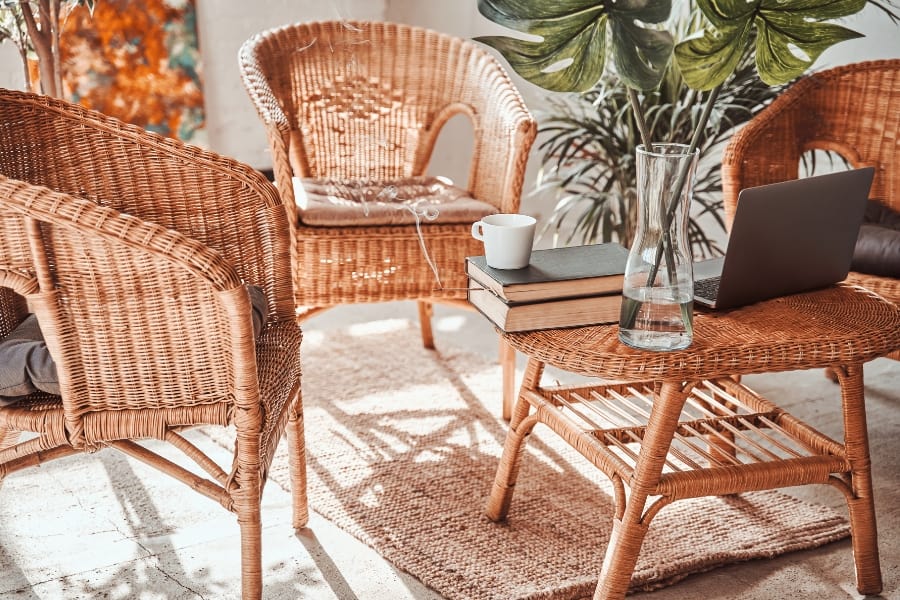
Bamboo is just awesome. It’s a very fast growing plant that can be harvested over and over without leaving a big environmental footprint.
It’s long-lasting and biodegradable, and because it’s naturally resistant to pets there’s no need for pesticides or synthetic fertilizers during growth.
Furniture Uses: Used in everything from flooring to chairs, tables, and even kitchenware.
2. Reclaimed Wood
This is wood that has been salvaged from old structures like barns, factories, or ships. Using reclaimed wood reduces the need for new wood, which cuts back on the need to chop down more trees.
Furniture Uses: Often used for dining tables, coffee tables, cabinets, and furniture frames.
3. FSC-Certified wood
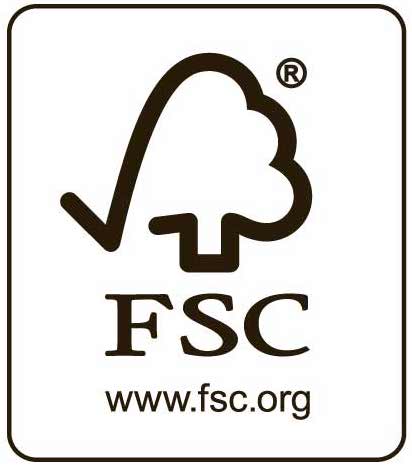
FSC-certified wood is sourced from forests that are managed responsibly (aka they don’t just go chopping down trees with no regard for the ecosystem including plants and animals).
It is basically a standard for wood that ensures sustainability and benefits local communities, workers, plants, and animals.
Furniture Uses: Just about any wood furniture, from dressers to bed frames, can be made from certified sustainable wood.
4. Cork
Cork is harvested from the bark of cork oak trees. It’s biodegradable, recyclable, and even has natural antibacterial properties.
Furniture Uses: Often seen in flooring, it’s also used for bulletin boards, stools, and side tables. There are even yoga mats made of cork!
5. Recycled Metal
Metals, such as steel, can be recycled repeatedly without losing quality. Using recycled metals reduces the energy-intensive process of creating new metals.
Furniture Uses: Used in all sorts of furniture including chairs, table bases, and bed frames.
6. Recycled Glass
Furniture Uses: Tabletops, decorative accents, and lamp bases.
Recycled glass repurposes old glass which decreases the demand for new raw materials and energy for production.
7. Organic Cotton
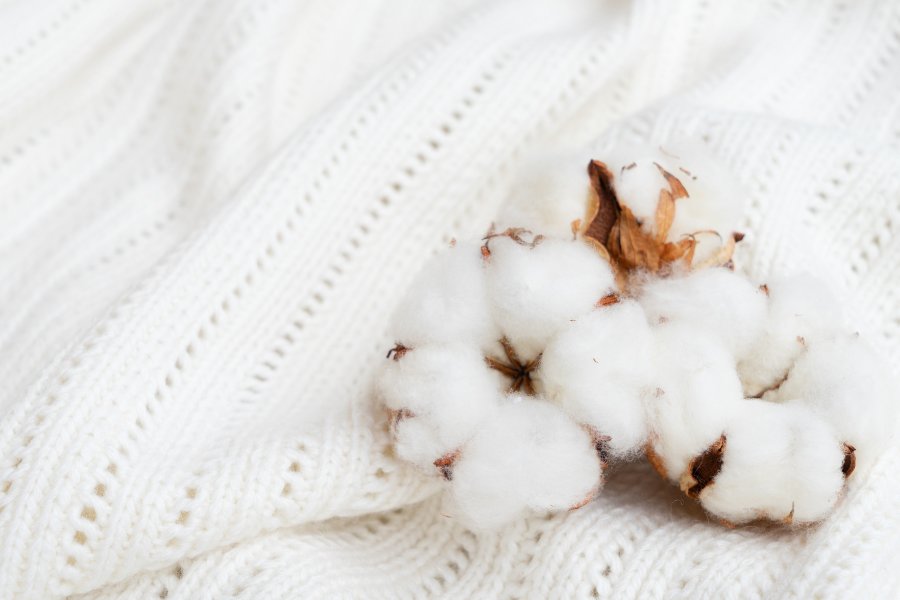
Unlike conventional synthetic cotton, organic cotton is grown without harmful pesticides and synthetic fertilizers.
However, even organic cotton can still leave a big carbon footprint given the farming, transportation, and manufacturing processes involved.
But it’s still a more eco friendly alternative to conventional cotton or polyester furniture items.
Furniture Uses: Used in upholstery, cushion covers, and pillows.
8. Hemp
Hemp is quickly renewable, requires minimal chemicals for growth, and results in a sturdy fabric perfect for furniture upholstery.
Furniture Uses: Often woven into fabric for couches, chairs, and decorative pillows. It can also be blended with other fibers.
9. Natural Latex

Used in furniture cushioning, natural latex is derived from the sap of the rubber tree (Didn’t know latex looks like milk, huh?).
It’s biodegradable and doesn’t release harmful off-gases like some synthetic alternatives.
Furniture Uses: Commonly used in mattresses, mattress toppers, seat cushions, and sofa fillings.
10. (An Extra one!) Natural Linen

Linen, derived from the flax plant, has been used for thousands of years in items from clothing to home goods. In furniture, linen has become a popular choice as it’s durable, comfortable, and eco-friendly.
Furniture uses: Used in upholstery, cushion covers, curtains, and table linens
Certifications Required!
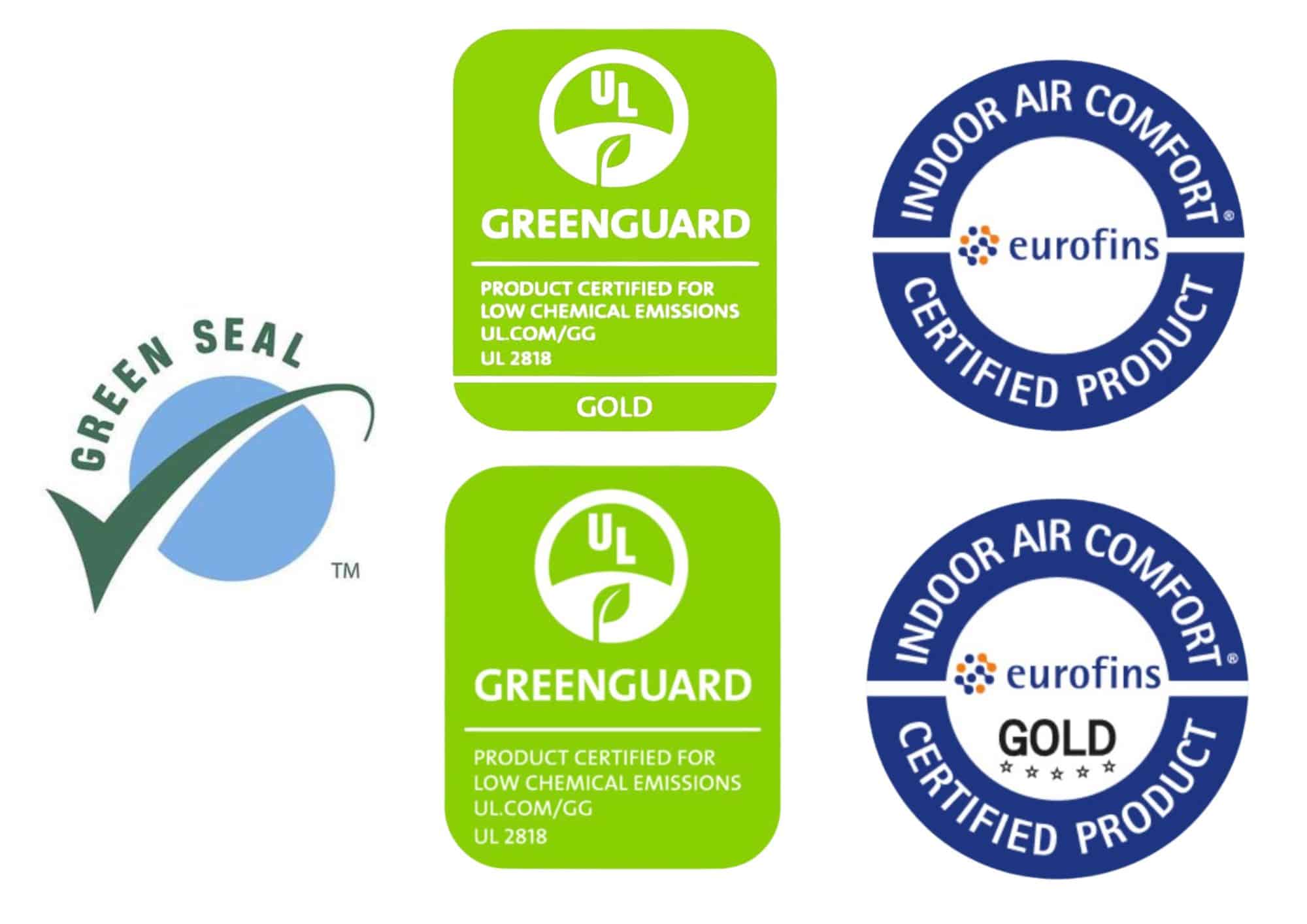
Don’t just go trusting brands out there that claim to use these materials, see that they prove it.
Third-party certifications like the ones below make sure a piece of furniture or a brand/company is legit. No greenwashing, no false claims…none of it.
If a company claims to be eco-friendly or non-toxic and has zero third-party certifications…be very wary.
For example, a wood furniture company that claims to be natural, sustainable, or eco-friendly should have either a Forest Stewardship Council (FSC) or Sustainable Forestry Initiative (SFI) certification.
Legit eco-friendly furniture materials will have at least one of these certifications:
- Forest Stewardship Council (FSC)
- Sustainable Forestry Initiative (SFI)
- Green Seal
- Global Organic Textile Standard (GOTS)
- Global Organic Latex Standard (GOLS)
- MADE SAFE
- OEKO-TEX® Standard 100
- GREENGUARD Gold Certification
Materials to Avoid
In learning what to look for in non-toxic furniture, we’ve also learned what to be cautious of.
Here are some materials to be cautious of:
- Non-Sustainably Harvested Wood: If wood isn’t certified by organizations like the Forest Stewardship Council (FSC) or the Programme for the Endorsement of Forest Certification (PEFC), it might come from illegal logging or non-sustainably managed forests.
- Particleboard and Cheap Plywood: These usually contain formaldehyde-based glues, which can emit formaldehyde gas, a known carcinogen.
- Non-Organic or Non-Certified Textiles: Textiles that aren’t organic or certified might have been produced using pesticides, chemical dyes, or processes that pollute water sources.
- Non-Recycled Metals: Mining for new metal ores can be very damaging to the environment.
- Unethical Down or Animal Products: If considering furniture with down fill or other animal-derived products, ensure they are ethically sourced.
- For instance, look for Responsible Down Standard (RDS) certifications.
- Exotic Woods: Woods like teak, mahogany, and rosewood might be harvested from endangered forests or ecosystems.
- Flame Retardants: While these chemicals are intended to prevent fires (which they don’t even do that well), they’re also linked to endocrine disruption and certain cancers.
- PVC (Polyvinyl Chloride): Used in cheaper furniture, PVC can release toxic chemicals. It’s also non-biodegradable and hard to recycle.
- High-Gloss, Synthetic Lacquers: These can contain high levels of solvents and VOCs.
If you are ever unsure, ask the company! Any non-toxic brand should be very transparent about all the materials they use. And if not, probably best to stay away.

